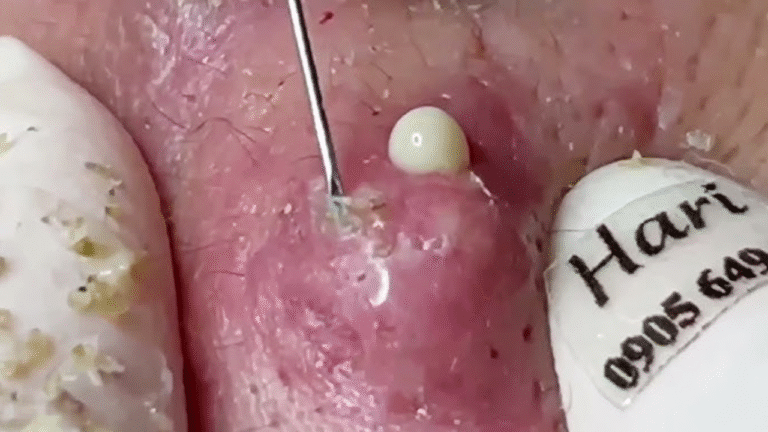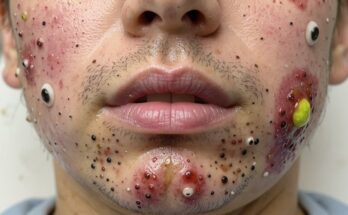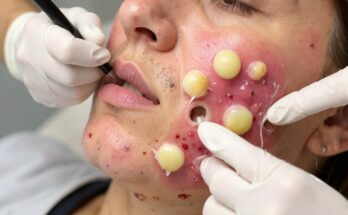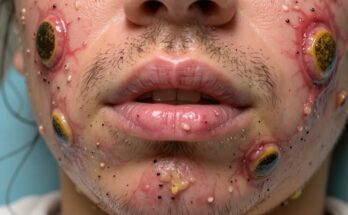Demystifying Blackheads: A Comprehensive Guide to Prevention and Treatment
Blackheads, those pesky dark spots that mar our complexion, are a common skin concern. But what exactly causes them, and how can we effectively address them? Let’s delve into the science and solutions.
Understanding the Root of the Problem: What Causes Blackheads?
The Perfect Storm: Sebum, Dead Skin, and Bacteria
Blackheads, also known as open comedones, arise from a confluence of factors within our skin’s pores. Dead skin cells, along with sebum (our skin’s natural oil), and bacteria become trapped, creating a blockage. This clog prevents the natural expulsion of cellular debris and oil, leading to the formation of a blackhead. The dark color isn’t dirt, but rather melanin oxidized by exposure to air. These blemishes frequently appear on the nose, chin, forehead, chest, and other areas.
Preventing Blackhead Formation: Proactive Skincare Strategies
Establishing a Consistent Skincare Routine
Preventing blackheads starts with a proactive skincare regimen. Gentle cleansing is paramount, removing dirt and excess oil that contribute to clogged pores. A cleanser containing salicylic acid (BHA) or glycolic acid (AHA) can be particularly beneficial due to its exfoliating properties. Regular exfoliation (two to three times a week) further helps prevent the buildup of dead skin cells, keeping pores clear. Remember, over-washing can backfire, stimulating increased oil production.
Effective Blackhead Treatment: A Multi-Faceted Approach
Gentle Removal Techniques: A Step-by-Step Guide
While resisting the urge to squeeze is crucial (to avoid scarring and infection), there are safe ways to address existing blackheads. Here’s a step-by-step guide to gentle removal:
- Cleanse: Begin with a gentle cleanser containing salicylic acid to soften the skin and open pores. Warm water enhances this effect.
- Steam (Optional): Five to ten minutes of facial steaming helps further loosen blackheads.
- Exfoliate: Use a chemical exfoliant with BHA or AHA (2-3 times weekly). Avoid harsh physical scrubs.
- Extraction (With Caution): If necessary, use a sanitized blackhead extractor tool or comedone remover, applying gentle pressure. Pore strips are another option, but their effectiveness is limited to surface-level blackheads.
- Clay Mask: Once a week, apply a clay mask (bentonite or kaolin) to absorb oil and tighten pores.
- Moisturize: Finish with a non-comedogenic moisturizer to maintain skin balance.
- Targeted Treatments: Consider retinoids (like adapalene) to prevent clogged pores and accelerate skin cell turnover.
When Professional Intervention is Necessary
For persistent, inflamed blackheads, or those accompanied by other acne forms, seeking professional help is essential. A dermatologist can offer various treatments including professional extractions, chemical peels, and prescription-strength topical treatments or oral medications. In severe cases, oral antibiotics or isotretinoin might be necessary. Laser therapy is another option for those who haven’t seen success with topical treatments. Addressing hormonal imbalances may also be crucial for those experiencing hormonal acne.
What to Avoid: Common Blackhead Mistakes
Harmful Habits to Break
Several practices can exacerbate blackheads or cause further skin damage:
- Over-squeezing or using dirty tools: This leads to irritation, scarring, and infection.
- Strong alcohol-based toners: These can excessively dry and irritate the skin.
- Over-washing: This stimulates increased oil production.
- Pore strips and vacuums: While seemingly effective, they offer temporary results and can be irritating.
Recommended Skincare Ingredients for Blackhead Control
Several ingredients are particularly effective in combating blackheads:
- Salicylic acid (BHA): Deeply penetrates pores to dissolve blockages.
- Glycolic acid (AHA): Exfoliates the skin’s surface, promoting cell turnover.
- Retinoids: Prevent clogged pores and reduce blackhead formation.
- Tea tree oil: Possesses antimicrobial properties to help reduce blackheads.
Maintaining Clear Skin: Long-Term Strategies
The key to clear skin is consistent care: cleanse, exfoliate, moisturize, and protect with SPF daily – even indoors. UV damage worsens pores and pigmentation. Remember that patience is key, and a holistic approach combining prevention and treatment is the most effective strategy.



